#Electric Organ
Text
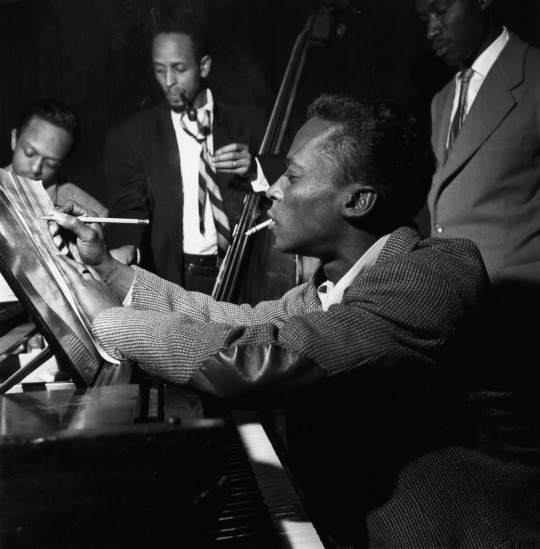
M i l e s D a v i s
#miles davis#jazz#fusion#musician#bandleader#composer#trumpet#flugelhorn#cornet#piano#electric organ
161 notes
·
View notes
Text
Looking for new music?

My name is Grungy Bill. I'm a post-punk solo artist from the UK. I've been making DIY Music since 2019. I play bass, guitar, and keyboard. My influences include Nick Cave, The Cramps, Devo, Joy Division, and The Pixies.
Check out my new cover of "Jack the Ripper" by Screaming Lord Sutch!:
youtube
Or click here to find my latest music.
#alternative rock#bass guitar#nick cave#nick cave and the bad seeds#the cramps#devo#diy music#electric organ#experimental rock#garage rock#gothabilly#gothic rock#home recording#horror punk#independent music#jack the ripper#joy division#music video#new wave#the pixies#post punk#psychobilly#punk rock#rockabilly#rock music#rock n roll#screaming lord sutch#uk music
81 notes
·
View notes
Text

Philicorda GM751 electric organ by Philips (1967)
#Philicorda#gm751#Philips#electric organ#vintage#retro#tech#music#music history#instruments#keyboard#1967
7 notes
·
View notes
Audio
Listen/purchase: Tempête by Mansfield.TYA
#tempête#monument ordinaire#mansfield.tya#mansfieldtya#mansfield tya#tempete#new wave#electric organ#bandcamp
4 notes
·
View notes
Text
#electric organ#transistor organ#organ#hurdygurdy#noise music#wall of sound#ambient#ambientmusic#ambientnoise#minimalism#experimental music#experimental#SoundCloud
2 notes
·
View notes
Audio
"Magdalena" by Sarah Davachi - From "Antiphonals" (2021)
35 notes
·
View notes
Photo



The Hammond organ.
#my great-aunt had one of these and it was incredible - you felt like a music producer#vintage#1930s#1940s#1950s#1960s#1970s#hammond#hammond organ#vintage musical equipment#keyboards#organ#electric organ#electronic organ#autochord#tonewheel#antique#antique musical instrument#vintage musical instrument#organs#home organ
9 notes
·
View notes
Text
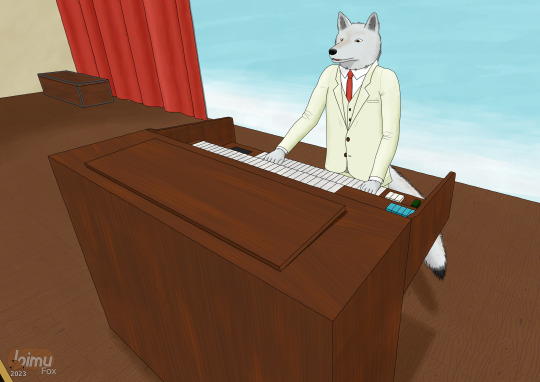
The organ playing wolf in his natural habitat. Weird reference to a certain album-cover, but it's hopefully a fun picture regardless!
2 notes
·
View notes
Text
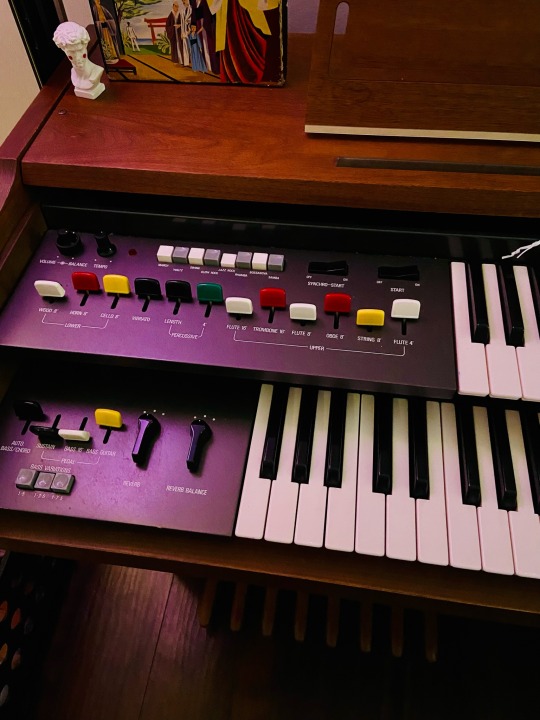
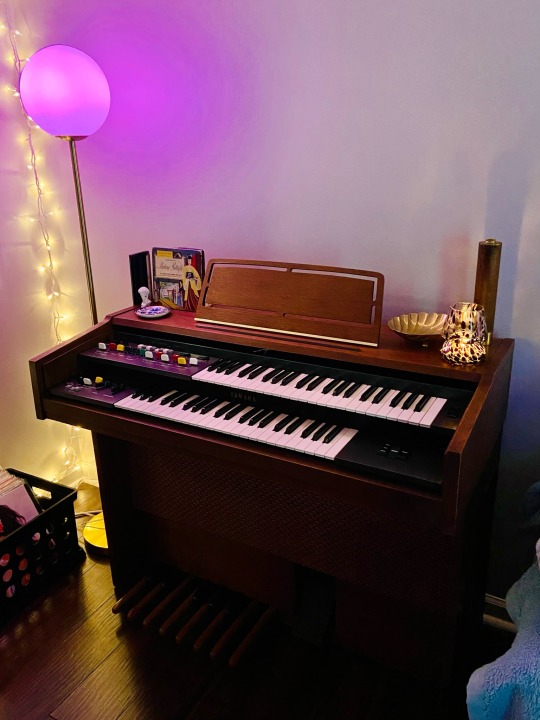
Dream marketplace find ✨
0 notes
Text
on the nature of void fluid . . .

We are back with another nerd post this time with speculative planetary science :0
Here, we have a cross section of the planet's crust. Ill go into more detail on each layer below ⬇️
The Surface
The "earth" in rain world was historically an ice world, with a weak sun and sheets of glaciers covering the surface. The only form of heat being from the earth itself. It doesn't take long to find large cave systems eroded by millenia of ice melt.
The erosion of the land from the great ice sheets created a jagged landscape of underground tunnels and pockets, shaped by the flow of the melting ice over time. The planet's crust is very hollow and thin thanks to this.
The Void Sea
As the water tunneled down into the earth, it collected in large underground pockets, kept as liquid by geothermal heat. These formed the planet's first true oceans, with life originating from communities around hydrothermal vents.
The Void Seas [yes, several!] are an ancient chemosynthetic ecosystem of extremophiles. The microbiome here has adapted to metabolize with as many different materials as available in this harsh environment, including inorganic substances, leading to the Void Sea's large appetite for the surface world and anything in it.
Of course, we know that microbes aren't the only denizens of the Void. The Void Worms are filter feeders supported by this microbial ecosystem! It may take tens of thousands of years for a Void Worm to reach the sizes seen—they don't stop growing.
Void Fluid Technology
As the Ancients expanded more and more into biotechnology, they discovered they could utilize many of the microbial cultures native to the Void Sea. Filtration facilities sought to isolate these species from one another, sorting for their individual uses and properties.
For example, iterators are the largest consumers of void fluid, using both domesticated and wild strains of microorganisms. The domesticated strains were repurposed into symbiotes to act as "cells," and so the blood of an iterator, or hemolymph, is a special mixture of these symbiotic void cultures.
And as living things, iterators do need to eat! In this case, nutrition comes from the underground bacterial soup. Yummy.
They have large-scale equivalents for almost every biological process, including digestion. The "stomachs" are vats of unrefined void fluid filled with symbiotic cultures that act as enzymes to prey upon native microbes and organic detritus. Or any unfortunate maintenance worker . . .
"Ascension"
The Void Sea is the origin of life, but also highly toxic to its children on the surface, eager to eat them alive. The activities of the microbiome as well as the output of the hydrothermal vents fill the caverns closest to the Seas with noxious fumes, causing hallucinations, delirium, and eventually death.
But ultimately, the Void Sea leaves no bodies. Whatever delusional creature makes it in, never returns. After all, those microorganisms evolved to consume whatever they could get.
#rain world#rainworld#rain world fanart#rw#rain world art#rain world lore#anyway it might sound far fetched but boy do real life organisms do funky things!#some bacteria can eat trash and make electricity#like you can power a light bulb with dirt#its called microbial fuel cells and theyre fascinating#sunshower lore
730 notes
·
View notes
Text

M i l e s D a v i s
81 notes
·
View notes
Text

It’s Getting Out of Hand
#Electric Remains#ER Daisy Bell#Electric Remains Daisy Bell#Dreamy Art#Caption From Disorder By Joy Division#Uhhhh#Gore#Death#Daisy Has a Design That Can Easily Be Static So It’s Fun Pushing Her Into More Organic Poses#A Lot of Her Arc to Me Atleast is About the Interplay Between Her as an Inorganic Object and Her Very Human Emotions and Physical Illness#There’s a Lot of Visceral Fleshiness to Her to Me Idk
173 notes
·
View notes
Note
I've heard that while most people really really love BotW and TotK, some people hate those two for going open-world, and some people hate TotK specifically for something about the story. As the resident Zelda expert I know of, what do you think of those takes?
"something about the story" is a bit too vague for me to answer--if you look at my totk liveblog tag from back when the game was newly released or my general zelda analysis tag you may be able to find some of my in-depth thoughts about the story of totk, but in general i liked it.
the open world thing though is something i can and will talk about for hours. (I am obsessed with loz and game design and this is an essay now <3) breath of the wild is a game that was so well-received that a lot of the criticism from older fans who were expecting something closer to the classic zelda formula was just kind of immediately drowned out and ignored, and while i don't think it's a valid criticism to suggest that botw strayed too far from its origins in going open-world, i am more than willing to look into those criticisms, why they exist, and why i think going open-world was ultimately the best decision botw devs could have made. (totk is a slightly different story, we'll cross that bridge when we come to it.)
Loz is a franchise with a ton of history and a ton of really, REALLY dedicated fans. it's probably second only to mario in terms of recognizability and impact in nintendo's catalog. To us younger fans, the older games can sometimes seem, like, prehistoric when compared to what we're used to nowadays, but it's important to remember just how YOUNG the gaming industry is and how rapidly it's changed and grown. the first zelda game was released in 1986, which was 31 years before botw came out in 2017. What this means for nintendo and its developers is that they have to walk a very fine line between catering to older fans in their 30s and 40s now who would have been in nintendo's prime demographic when the first few games in the franchise were coming out AND making a game that's engaging to their MODERN target demographic and that age group's expectations for what a gaming experience should look like.
LOZ is in kind of a tough spot when it comes to modernizing, because a lot of its core gameplay elements are very much staples of early RPGs, and a lot of those gameplay elements have been phased out of modern RPGs for one reason or another. gathering collectibles, fighting one's way through multilevel, mapless dungeons, and especially classic zelda's relative lack of guidance through the story are all things that date games and which modern audiences tend to get frustrated with. for the last few releases before botw, the devs had kind of been playing with this -- skyward sword in particular is what i consider their big experiment and what (i think) became the driving force behind a lot of what happened with botw. Skyward sword attempted to solve the issues I listed by, basically, making the map small and the story much, much more blatantly linear. Skyward sword feels much more like other modern rpgs to me than most zelda games in terms of its playstyle, because the game is constantly pushing you to do specific things. this is a common storytelling style in modern RPGs--obviously, the player usually needs to take specific actions in order to progress the story, and so when there's downtime between story sections the supporting characters push the player towards the next goal. but this actually isn't what loz games usually do. in the standard loz formula, you as the player are generally directly given at most 4 objectives. these objectives will (roughly) be as follows: 1. go through some dungeons and defeat their bosses, 2. claim the master sword, 3. go through another set of dungeons and defeat their bosses, 4. defeat the final boss of the game. (not necessarily in that order, although that order is the standard formula.) the ONLY time the player will be expressly pushed by supporting characters towards a certain action (excluding guide characters) is when the game is first presenting them with those objectives. in-between dungeons and other gameplay segments, there's no sense of urgency, no one pushing you onto the next task. this method of storytelling encourages players to take their time and explore the world they're in, which in turn helps them find the collectibles and puzzles traditionally hidden around the map that will make it easier for them to continue on. Skyward sword, as previously mentioned, experimented with breaking this formula a bit--its overworld was small and unlocked sequentially, so you couldn't explore it fully without progressing the narrative, and it gave players a "home base" to return to in skyloft which housed many of the puzzles and collectibles rather than scattering them throughout the overworld. This method worked... to an extent, but it also meant that skyward sword felt drastically different in its storytelling and how its narrative was presented to the player than its predecessors. this isn't necessarily a BAD thing, but i am of the opinion that one of zelda's strongest elements has always been the level of immersion and relatability its stories have, and the constant push to continue the narrative has the potential to pull players out of your story a bit, making skyward sword slightly less engaging to the viewer than other games in the franchise. (to address the elephant in the room, there were also obviously some other major issues with the design of sksw that messed with player immersion, but imo even if the control scheme had been perfect on the first try, the hyperlinear method would STILL have been less engaging to a player than the standard exploration-based zeldas.)
So when people say that botw was the first open-world zelda, I'm not actually sure how true I personally believe that is. I think a lot of the initial hype surrounding botw's open map were tainted by what came before it--compared to the truly linear, intensely restricted map of skyward sword, botw's map feels INSANE. but strictly speaking, botw actually sticks pretty closely to the standard zelda gameplay experience, at least as far as the overworld map is concerned. from the beginning, one of the draws of loz is that there's a large, populated map that you as the player can explore (relatively) freely. it was UNUSUAL for the player to not have access to almost the entire map either immediately or very quickly after beginning a new zelda game. (the size and population of these maps was restricted by software and storage capabilities in earlier games, but pretty muhc every zelda game has what would have been considered a large & well populated map at the time of its release.) what truly made botw different was two things; the first being the sheer SIZE of the map and the second being the lack of dungeons and collectibles in a traditional sense. Everything that needs to be said about the size of the map already has been said: it's huge and it's crazy and it's executed PERFECTLY and it's never been done before and every game since has been trying to replicate it. nothing much else to say there. but I do want to talk about the percieved difference in gameplay as it relates to the open-world collectibles and dungeons, because, again, i don't think it's actually as big of a difference as people seem to think it is.
Once again, let's look at the classic formula. I'm going to start with the collectibles and lead into the dungeons. The main classic collectible that's a staple of every zelda game pre-botw is the heart piece. This is a quarter of a heart that will usually be sitting out somewhere in the open world or in a dungeon, and will require the player to either solve a puzzle or perform a specific action to get. botw is the first game to not include heart pieces... TECHNICALLY. but in practice, they're still there, just renamed. they're spirit orbs now, and rather than being hidden in puzzles within the overworld (with no explanation as to how or why they ended up there, mind you) they're hidden within shrines, and they're given a clear purpose for existing throughout hyrule and for requiring puzzle-solving skills to access. Functionally, these two items are exactly the same--it's an object that gives you an extra heart container once you collect four of them. no major difference beyond a reskin and renaming to make the object make sense within the greater world instead of just having a little ❤️ floating randomly in the middle of their otherwise hyperrealistic scenery. the heart piece vs spirit orb i think is a good microcosm of the "it's too different" criticisms of botw as a whole--is it ACTUALLY that different, or is it just repackaged in a way that doesn't make it immediately obvious what you're looking at anymore? I think it's worth noting that botw gives a narrative reason for that visual/linguistic disconnect from other games, too--it's set at minimum TEN THOUSAND YEARS after any other given game. while we don't have any concrete information about how much time passes between new-incarnation games, it's safe to assume that botw is significantly further removed from other incarnations of hyrule/link/zelda/etc than any other game on the timeline. It's not at all inconceivable within the context of the game that heart pieces may have changed form or come to be known by a different name. most of the changes between botw and other games can be reasoned away this way, because most of them have SOME obvious origins in a previous game mechanic, it's just been updated for botw's specific setting and narrative.
The dungeons ARE an actual departure from the classic formula, i will grant you. the usual way a zelda dungeon works is that link enters the dungeon, solves a few puzzles, fights a mini boss at about the halfway point, and after defeating the mini boss he gets a dungeon item which makes the second half of the dungeon accessible. He then uses that item in the dungeon's final boss fight, which is specifically engineered with that item in mind as the catalyst to win it. Botw's dungeons are the divine beasts. we've removed the presence of mini-bosses entirely, because the 'dungeon items' aren't something link needs to get within the dungeon itself--he alredy has them. they're the sheikah slate runes: magnesis, cryonis, stasis, and remote bombs. Each of the divine beast blight battles is actually built around using one of these runes to win it--cryonis to break waterblight's ice projectiles, magnesis to strike down thunderblight with its own lightning rods, remote bombs to take out fireblight's shield. (i ASSUME there's some way to use stasis effectively against windblight, mostly because it's obvious to me that that's how all the other fights were designed, but in practice it's the best strategy for that fight is to just slow down time via aerial archery, so i've never tried to win that way lol.) So even though we've removed traditional dungeon items and mini-boss fights, the bones of the franchise remain unchanged underneath. this is what makes botw such an ingenious move for this franchise imo; the fact that it manages to update itself into such a beautiful, engaging, MODERN game while still retaining the underlying structure that defines its franchise and the games that came before it. botw is an effective modern installment to this 30-year-old franchise because it takes what made the old games great and updates it in a way that still stays true to the core of the franchise.
I did mention totk in my opening paragraph and you mention it in your ask so i have to come back to it somehow. Do i think that totk did the gigantic-open-world thing as well as botw did? no. But i also don't really think there was any other direction to go with that game specifically. botw literally changed the landscape of game development when it was released. I KNOW you all remember how for a good year or two after botw's release, EVERY SINGLE GAME that came out HAD to have a massive open-world map, regardless of whether or not that actually made sense for that game. (pokemon is still suffering from the effects of that botw-driven open world craze to this day. rip scarlet/violet your gameplay was SUCH dogshit) I'm not sure to what degree nintendo and the botw devs anticipated that success, (I remember the open world and the versatility in terms of problem-solving being the two main advertising angles pre-release, but it's been 7 years. oh jesus christ it's been SEVEN YEARS. anyways) but in any case, there's basically NO WAY that they anticipated their specific gameplay style taking off to that degree. That's not something you can predict. When creating totk, they were once again walking that line between old and new, but because they were only 3ish years out from botw when totk went into development, they were REALLY under pressure to stay true to what it was that had made botw such an insane success. I think that's probably what led to the expanded map in the sky and depths as well as the fuse/build mechanics--they basically took their two big draws from botw, big map and versatility, and said ok BIGGER MAP and MORE VERSATILITY. Was this effective? yeah. do i think they maybe could have made a more engaging and well-rounded game if they'd been willing to diverge a little more from botw? also yeah. I won't say that I wanted totk to be skyward sword-style linear, because literally no one wanted that, but I do think that because of the insane wave of success that botw's huge open world brought in the developers were under pressure to stay very true to botw in their designing the gameplay of totk, and I think that both the gameplay and story might have been a bit more engaging if they had been allowed to experiment a little more in their delivery of the material.
#wow it's been a while since i've written a real homegrown organic legend of zelda essay. i missed this#hi everyone. when the fuck is the next game going into development i need to have something to wildly theorize about again#god. it's been. seven years since botw came out. im going to go chew on live electrical wires#zelda analysis#asks
110 notes
·
View notes
Text

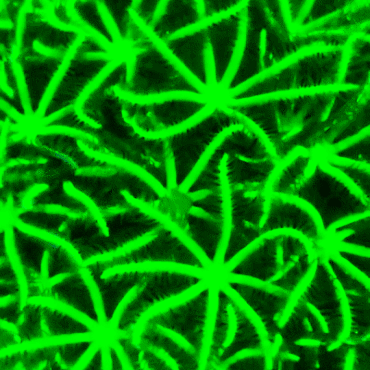

🍏 ~ Pipe Organ Coral ~ 🍏 (marine_farmers)
(Credit if you use) (ko-fi)
#tw clusters#coral#coral reef#neon#neon green#00ff04#pipe organ coral#bright green#electric green#sea life#marine animals#lime green#marine life#sea creatures#sealife#sea stim#seacore#oceancore#ocean stim#ocean aesthetic#coral stim#coral gifs#neon colors#bright colors#neon stim#stim#coral reefs#teal stim#ocean coral#coral sea
90 notes
·
View notes
Text




1 - Diantha security detail comic
2 + 3 - Emmet's UDF uniform vs Kalosian Guard uniform
4 - Lore/Background comic
Hooo boy ok so this idea has been simmering on the backburner for a while now. So Legends Z-A had its trailer released a few days back and I figured I'd make something around it. I know logically it's going to be a game set in the past but I found myself wanting to work on something more futuristic/sci-fi which is why we have our little Cyber Emmet here.
There's a lot of different things to mention so I'm just gonna break them down by the images.
1:
Diantha is attending a conference/ceremony where she will be discussing the plans for the urbanization of Kalos with the assistance of neighbouring tech giant and long time trade partner Unova. As a sign of goodwill, the Unovan Defense Force sent several people to either work as security or to help organize and prepare the ceremony. Among the list of people is Emmet, who was recently "working with" the UDF, and who is going to serve as Diantha's bodyguard for the event
Emmet's uniform was made by a mix of Unovan and Kalosian designers. It's meant to mimic the shapes while still keeping aspects of his Unovan uniform (mainly the collar, cuffs, and silver trim). He is carrying a handgun from his UDF uniform, however due to the public nature of the event, he is using his charge pistol instead of his wired pistol. He's also using a different face shield, using a silver one as opposed to his black one, since it better matches the uniform he's wearing for the event
Diantha's fur coat still has the angel wing shape. This isn't lore relevant I just couldn't fit the full thing onto the panel but it's definitely there
2 + 3:
Emmet uses a wired pistol (left side holster) and a charge pistol (right side holster). Both are standard issue firearms used by the UDF, however charge pistols are more common thanks to them being easy to hold and carry. A wired pistol connects to a battery pack of some kind to fire at a greater speed, whereas a charge pistol will generate its own power but take longer to fire and load. Emmet's wired pistol connects to the battery network that powers his body, allowing him to take advantage of his fast reflexes by using his faster weapon
Emmet doesn't get anything to wear for his Unovan uniform! Part of the contract he signed for his cybernetics states that he can't cover the prostheses unless it could lead to a breach in confidentiality (such as going to a foreign region or appearing in public outside of work reasons) since he's meant to effectively advertise the quality and construction of the body built for him. Of course he refuses to go outside completely naked to fight so the UDF got him a cropped version of his coat and shoes so he can have some more cover
The face shield is meant more for form than function. Technically the only purpose they serve is to cover his face when he's out on patrol, though it can also act as a screen to show him information about what he's seeing (kind of like an AR headset). He could technically get the screen function though cornea implants but he's not doing that + he wants the anonymity provided by the shield
Sections of the body can split open or be removed. The front abdominal panel can do both due to the different processing mechanisms inside needing easy access for repair/maintenance. Limbs can be swapped for different prostheses provided they have a compatible socket
The sockets in Emmet's back can be used to power other weapons/devices if he has a compatible cable. Emmet was given a bag of different attachments and cables to hook into his back so he can power a range of things from phones to laser rifles
He has removable skin. Any shot of him with the black body is the body without skin. In situations where he could possibly have skin showing or he is required to wear something that shows more skin, he'll have material rolled over the sections of his body that will be visible so they look more normal
4:
Emmet got run over by a train ♥ long story short is that he went to rescue a passenger who had fallen off the platform and miscalculated how much time he had before the train pulled in. Once he got stabilized in the hospital afterwards, he only has around 30% of his original body intact, along with some sections they were able to somewhat repair but required new hardware being installed in order to return their function. Anything under the waist and a large portion of his arms were crushed beyond repair and as such, he's been connected to different machine to mimic the functions of his organs
The UDF (in a rather scummy play) contacted Emmet for business, asking him to sign a contract that would ensure he would live by letting them test their confidential new tech on him. He is the only ethical candidate they have for testing such prostheses so to get him to agree, they offer to cover the cost of everything relating to his health and work, as well as paying him a salary for the trouble. Since the only other options are "die slowly" or "lose all self sufficiency and go bankrupt living in hospital", he agrees, and so begins his second job as a living experiment and tool for the UDF
I think that's the most I've written for one post yikes. This isn't even everything but I'll cut it here because my hands are not pleased with me typing.
I still have a lot to think about for this concept, mostly what kind of work Emmet will do while overseas in Kalos and whether something dangerous enough will happen to warrant him using his body for what it was made for. That might be funny, only two settings and they're "I love macarons :)" and bloodshed.
Anyways hope you guys enjoyed this dump, feel free to ask on anything (it helps me write too ^^). See you later and have a nice day!
#submas#au#submas au#emmet#subway master emmet#emmet pokemon#kudari#fanart#sketch#drawing#digital art#it just occurred to me that the joltiks would basically cover him like a giant yellow fur coat because he gives off electricity#maybe I should draw that#anyways I am infinitely enraged with how much better he looks from the back!! pretty boy but only when he's not looking at you#SHIT I just realized I forgot to mention the tank#uhh fun fact Emmet spends half of his day inside of a tube ♥ the prostheses can only support him for so long and they can't do his organ fu#They have the capability‚ but it's nowhere near as good as the specialized machines he hooks into at home‚ so he still spends much of his#time asleep or resting in the tube at home. The good thing is that he's a third of his original size so the life support tube doesn't take#up too much space.#Hoough ok I think that's enough writing let me know if you guys want more of this creature‚ I'm heading out for the night#See you and have a nice day!
96 notes
·
View notes
Text
Okay, so, intruments Vessel can play:
Electric guitar
Acoustic guitar
Bass
Piano (jazz, classical, contemporary)
Violin
Cello
Organ
Next thing you know this guys' gonna come out on stage with a flute and a banjo. Why and how is all I've got to say
#this is from the fact that in the recordings he plays every intrument except from the drums#violin and cello are from a small section in WTBB#and organ is from The Way That You Were#the organ (however) may just be a transformed electric piano on the organ setting though#but if he does know how to play organ I'd lose it because (coming from an organ player) that shit is hard man#sleep token#st#vessel#vessel sleep token#mel's rambles
121 notes
·
View notes